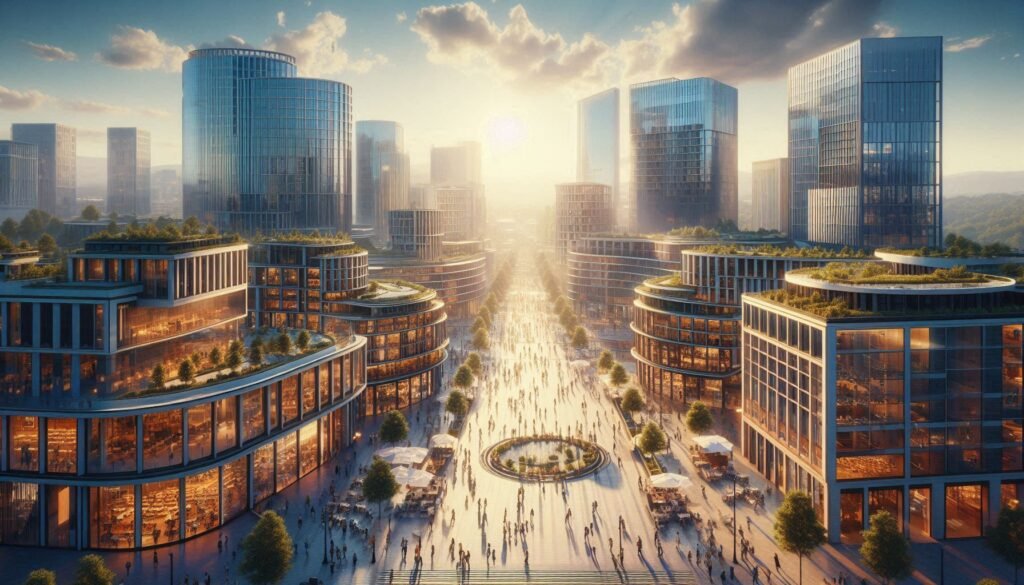
Judicial Reform in Mexico presents a significant shift in how the country’s judiciary will operate. With the introduction of popular elections for judges, there are growing concerns about the risks of politicization, corruption, and a weakening of judicial impartiality.
The United Mexican States, or simply Mexico, is a country located in North America with a population of 126 million people living in an area of 1,958,201 km². Alongside a rich culture and natural beauty that make it the most visited country by tourists in Latin America, Mexico also boasts an emerging industrialization and oil wealth.
However, alongside these positive aspects, Mexico faces severe issues for which no solution has been found. Extreme social inequalities, growing corruption (ranked 126th in Transparency International’s index [1]), and organized crime that extends its influence into public institutions, even reaching abroad (including the Brazilian Amazon), exploiting violence far surpassing that of other countries.
Reflecting on Mexico’s characteristics, one cannot help but notice its similarities with Brazil. The resemblance extends from the federal system to corruption, with Brazil also falling year after year in this area, ranking 104th in the same index in 2023.
The Peculiarity of Mexico’s Judicial Elections
It is worth noting that no country in the world with a high standard of living adopts a system of elections for all levels of the judiciary, from the base to the top of the pyramid.
It is true that the United States has elected judges, but not at the federal level—only state judges. In most states, first-instance judges are elected. Candidates participate in debates much like politicians and serve for a fixed term. This system is part of democracy and was designed as a way to involve the public in the judiciary, just like jury trials, which in the U.S. also extend to civil cases.
Bolivia has a system most similar to what Mexico intends. Articles 182, 188, and 198 of its Constitution provide for the election of judges for the Supreme Court of Justice, the Agro-Environmental Court, and the Plurinational Constitutional Court. In Cuba, the Constitution does not provide for direct elections, as per Article 126. In Nicaragua, the Constitution does not address this issue, referring it instead to law in Article 59.
In the Mexican judicial reform, candidates will be nominated by the legislative, executive, and judicial branches. One can already imagine the candidates seeking connections with the President of the Republic or the governor, asking for an opportunity.
And, of course, with an explicit or implicit promise that they will fulfill all requests that, if elected, come their way. The same procedure will occur with the Legislative branch, and eventually within the Judiciary, where court presidents will adapt to the system.
One detail: all current judges will be removed, which in Spanish judicial language means dismissed. That is, they will go home. This happened in Brazil only during the Estado Novo, when Getúlio Vargas abolished the Federal Judiciary. Even then, many federal judges were reassigned to state public finance courts.
Objectives of the Mexican Judicial Reform
The Mexican Senate’s website reports the approval of the reform, summarizing the votes of many senators. The reasons are the usual ones in such cases: to end excessive salaries, service delays, and the disconnect with the population. [2]
However, there are arguments that the reform would leave judges at the mercy of the Executive branch, that the changes were not seriously discussed or analyzed, and that this was another step towards totalitarianism.
From what has been stated above, one can affirm that the salaries of federal judges in Mexico are among the highest in the world. This has long been seen as a concession, based on the belief that it is the only way to prevent corruption.
On the other hand, they are not allowed any other activity, except for teaching, and even then, without receiving payment. The service delays, which are likely true, are a management issue, best solved with appropriate, less showy measures.
The disconnect with the population merits two considerations: a) a judge should not act like a populist, handing out smiles and hearts; distance is a requirement for impartiality; b) understanding the population’s problems is undoubtedly important and can be addressed through judicial training schools, visits, testimonies, videos, and other practices.
Key Points of the Reform
The reform has several aspects, but the most significant is direct popular vote. As mentioned, this is a system practically non-existent in the world, leading to two possible conclusions: either Mexico has discovered something humanity hadn’t thought of in millennia, or this initiative represents various risks for the country’s future.
Imagine if this were adopted in Brazil.
Candidates would come from their own bases. They would only need a law degree from a poorly rated college and the backing of some social segment to enter the race. Evidently, what would matter most would not be a solid legal foundation, but rather support from a blog with numerous followers.
We would have candidates from all sorts of groups: from church X or Y, from local or national criminal factions, from green-blue or blue-yellow football clubs, from bankers or drug addicts—the possibilities would be endless.
However, the positions at the Supreme Federal Court, given their importance, would be the most fiercely contested. TV channels would host debates where candidates could present the strength of their ideas or, perhaps, their insults. A PhD professor with decades of study, published works, and an impressive curriculum would stand no chance against a famous influencer.
The reform’s first point claims to aim at combating nepotism. [3] However, there is no need for a constitutional reform for this. In Brazil, the National Council of Justice, during Minister Gilson Dipp’s tenure as ombudsman, enforced the prohibition of nepotism. Nepotism as a rule ended. Of course, it may exist in a hidden form here or there. But a simple complaint to the CNJ would lead to an investigation.
Another point in the reform is the adoption of faceless judges. This is not new, as it was the system adopted in Colombia in the 1990s, after a criminal faction destroyed the Supreme Court and killed many judges and court employees.
The system didn’t work because the names of the anonymous judgment authors, which were secretly recorded in an official letter to the president of the Court, were leaked, and some judges ended up being identified. They paid with their lives.
The risk faced by judges and public prosecutors in Mexico, Colombia, Ecuador, Brazil, and other countries should be addressed with strict legislation, intelligent strategies, and courage. Expecting anonymous judges, defying due legal process, to be the solution is a populist measure with no expectation of good results.
Another point of the reform is to eliminate the Federal Judiciary Council, a body similar to Brazil’s National Council of Justice, replacing it with a Disciplinary Judicial Court. The CFM has been accused of being lenient when examining complaints against judges. This accusation merits two comments.
First, many complaints stem from dissatisfaction with a judicial decision or even a misunderstanding of the ruling. Second, the CFM may indeed be overly tolerant. I cannot venture an opinion on this, as I do not know the Council’s reality. If true, it should certainly be corrected.
Leniency leads to outrage and often triggers radical reactions. Punishing, or even investigating colleagues, is an unpleasant experience. But whoever occupies such a position must fulfill their duty. Naturally, this must be done in compliance with existing laws.
Finally, the reform provides for gender parity. In Brazil, Courts of Appeals allocate 40% of their positions to women, and candidates are approved equally, sometimes even in greater numbers, without the need for a constitutional reform.
In Conclusion
This is, in summary, the situation to which Mexico’s judiciary will be subjected. It is a one-way experiment that will place the country’s justice system under enormous risk of politicization and strengthen drug cartels. Not to mention the flight of investors, who will be unwilling to submit to judges with no presumption of impartiality.
Brazil’s judiciary leaders, both in the courts and in professional associations, should pay close attention to this matter. But not just them. Other bodies within the justice system, such as the Public Prosecutor’s Office, the Bar Association, the Public Defender’s Office, and the attorneys general, should also be aware.
In our Latin America, issues spread quickly, and Brazil is often receptive to novelties. It is true that our justice system, for various reasons, is not doing well and is facing a credibility crisis. But what is bad could become much worse. The yellow warning light is on.


